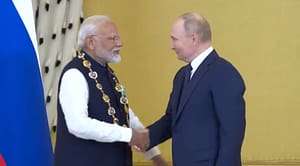Cabinet approves health coverage to all senior citizens of the age 70 years and above irrespective of income under Ayushman Bharat Pradhan Mantri Jan Arogya Yojana (AB PM-JAY)
The Union Cabinet, chaired by the Prime Minister Shri Narendra Modi, has approved the health coverage to all the senior citizens aged 70 years and above irrespective of income under the flagship scheme Ayushman Bharat Pradhan Mantri Jan Arogya Yojana (ABPMJAY)
This aims to benefit approximately 4.5 Crore families with six (6) crore senior citizens with 5 Lakh rupees free health insurance cover on a family basis.
With this approval, all senior citizens of the age 70 years and above irrespective of their socio- economic status would be eligible to avail the benefits of AB PM-JAY. The eligible senior citizens would be issued a new distinct card under ABPMJAY. The senior citizens of the age 70 years and above belonging to families already covered under AB PM-JAY will get an additional top-up cover upto ₹5 lakh per year for themselves (which they do not have to share with the other members of the family who are below the age of 70 years).
All other senior citizens of the age 70 years and above will get a cover upto ₹5 lakh per year on a family basis. Senior citizens of the age 70 years and above who are already availing benefits of other public health insurance schemes such as Central Government Health Scheme (CGHS), Ex-Servicemen Contributory Health Scheme (ECHS), Ayushman Central Armed Police Force (CAPF) may either choose their existing scheme or opt for AB PMJAY. It has been clarified that senior citizens of 70 years and above who are under private health insurance policies or Employees’ State Insurance scheme will be eligible to avail benefits under AB PM-JAY.
AB PM-JAY is the world’s largest publicly funded health assurance scheme which provides health cover of Rs. 5 lakh per family per year for secondary and tertiary care hospitalization to 55 crore individuals corresponding to 12.34 crore families. All members of the eligible families irrespective of age are covered under the scheme. The scheme has covered 7.37 Crore hospital admissions including 49 percent women beneficiaries. The public has benefited to the extent of over Rs. 1 Lakh crore under the scheme.
The expansion of cover to senior citizens of the age of 70 years and above was earlier announced by Hon’ble Prime Minister Shri Narendra Modi in April 2024.
















